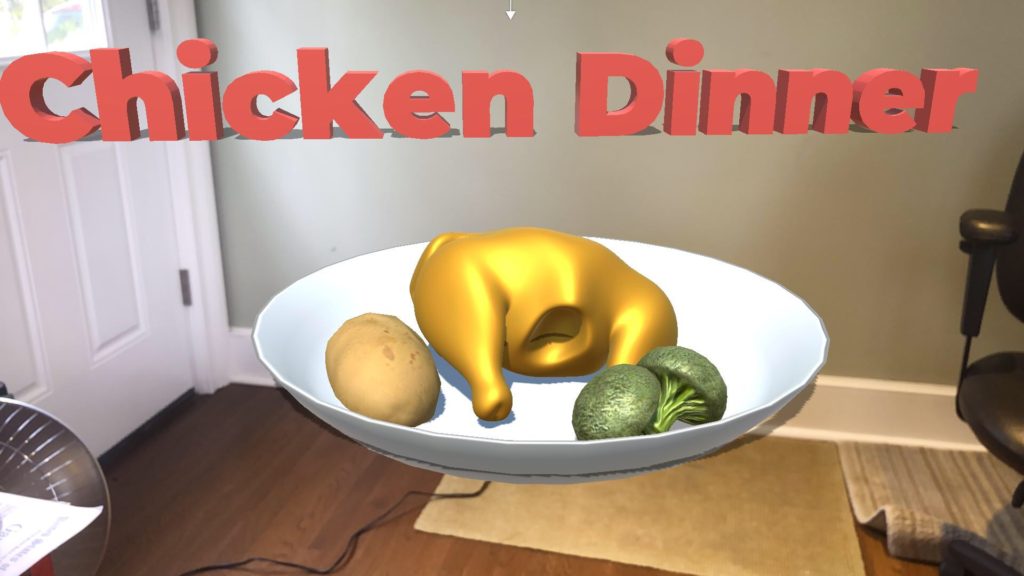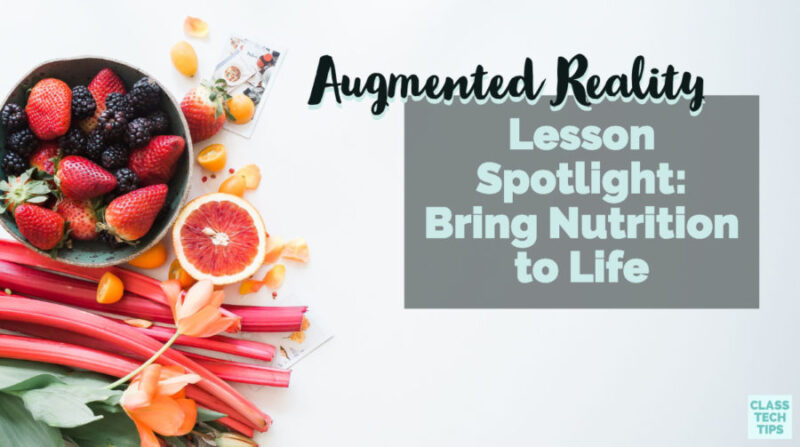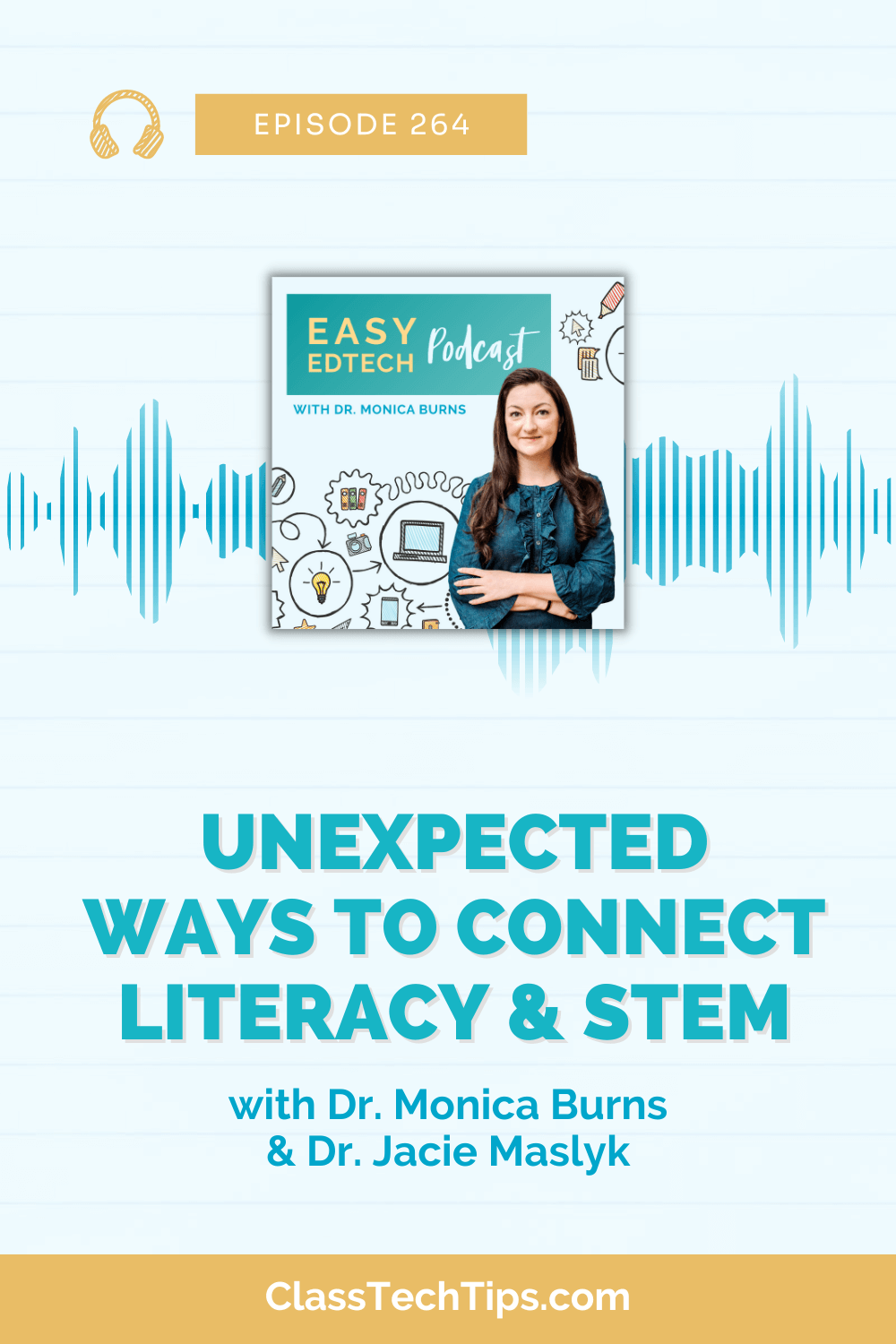The cool factor behind augmented reality might grab the attention of students at first glance, but can this technology really change the way students interact with content in their classroom? Making teaching and learning relevant and engaging for students can take many forms. With augmented reality in the classroom, students can bring their ideas to life and represent their thinking in new ways.
Earlier this year I shared a blog post on augmented reality and Web 3.0 featuring 3DBear. If you haven’t gotten a chance to look at their dynamic EdTech tool, I definitely recommend that you take a look. At TCEA in San Antonio last month, I sat in on a presentation where Kurt Allen from 3DBear shared the quick steps for getting started with a room full of enthusiastic educators.
Augmented Reality Lesson
So in this blog post, I wanted to spotlight an augmented reality lesson with you. It focuses on nutrition and how you can explore this topic with students of all ages. Of course, you’ll want to tailor this activity to the needs of your particular group.
One advantage of these types of augmented reality projects is that they lend themselves to cross-curricular lessons. You might make connections to other learning goals, or even speaking and listening standards. This type of exploration can happen if students work collaboratively or present what they have created to their peers or a broader audience. If students are conducting research, you might also make connections to information reading standards.
Middle School and Elementary Nutrition Lesson
In elementary or middle school, you might start with a robust discussion on nutrition. Students might watch a TED-Ed video to help answer some of their questions, or explore a curated list of articles hosted online. You can decide on the focus area or emphasis you would like to place on a specific part of a nutrition unit.
You can then have students open up the health and nutrition collection inside of 3DBear. Here they will find lots of objects that can help them create a healthy meal and an unhealthy meal. Students can “place” the objects on their desk or another surface. Then they can take a screenshot/picture or even a video with a voice-over and share what they have created with classmates.
3DBear has a teacher dashboard where you can view or share snapshots of your students’ work. If your elementary students already use a tool like Seesaw, this is a great “app smash” opportunity. They can record their voice over their picture to explain their thinking. If your middle school students use Google Classroom, they can post their image or submit it to their teacher using this platform.
High School Nutrition Lesson
At the high school level, you might have students work in small groups so they can do more analysis, research, problem solving, and iteration. One group can focus on a particular diet plan like Keto or the Mediterranean Diet. Then they can decide on a daily meal plan for someone eating within those parameters.
Students can research how their meal plans connect to a particular diet and represent best practices in healthy eating. After they have solidified their plan, students can find elements of those foods in the health and nutrition collection inside of 3DBear or Thingiverse. Alternatively, students can build them in Sketchup or Tinkercad. Teachers can even curate their own custom collection around any topic of project in Thingiverse if they would like.

After their research and 3D modeling is complete, students can create a video of the meals and share any additional conclusions. Depending on your focus area for this type of activity, you might have students report on nutritional content, caloric content, percentage of recommended dosage, and/or amounts of carbohydrates, proteins, fats, sugar, and salt in a meal.
Design Thinking and Augmented Reality
With both of the augmented reality activity ideas explained above, you can make use of the pre-made content within 3DBear. All you have to do is use the keyword search inside the tool to find elements related to a topic. This feature is great as a support for students, or for activities that might have time constraints where they won’t have time to design their own.
One feature of 3DBear that I find particularly compelling is that instead of just searching for elements, you can add custom elements to your library. So if you’re completing a new unit on a specific topic, this can become part of the research and development portion of a unit of study. Students can create elements and add them to 3DBear. So 3DBear becomes the tool for video creation, allowing students to create for an authentic audience.
Special Offer from 3DBear
The team at 3DBear has a special offer going on right now. If you sign up for next year now, you get the rest of this year as a bonus free. If you want just want to try 3DBear with your class for 30 days, head over to their website to take advantage of their free trial and special bonus with an annual subscription!







